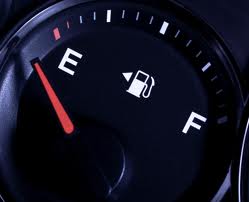
Using Fuel Additives at Higher Dosages - Overdosing
 by Andy Published on Friday, March 13th, 2015
by Andy Published on Friday, March 13th, 2015
I am regularly asked whether fuel additives can be added at a higher dose or added to less fuel to make a more potent concentrate and whether this is more beneficial.
The answer in most cases is no. This is because detergents, cetane improvers, dispersants, lubricants, etc., are designed to work with a specific amount of fuel. This ensures that any deposits are removed and dispersed in a controlled manner and aren’t purged through the system too quickly. It also reduces the risk of overloading the fuel with too much cetane improver or other functions that risk negating the benefits they set out to achieve.
For example, amine and Polyetheramine-based fuel cleaners work much better when used with the correct amount of fuel and gradually allow the chemistry to remove deposits in a controlled way. If you add a cleaner designed for sixty litres of fuel to ten litres of fuel, you run the risk of removing deposits too quickly and lose the benefit of the extended duration that sixty litres will provide.
Another reason for this is that fuel cleaners are designed to work with fuel flow where the actual act of removing deposits requires the fuel to be in motion. Deposits are removed layer by layer as the fuel moves through the system. The stronger the concentrate – and the less fuel that is treated – the lesser the amount of total motion that occurs. Amines dissolve and disperse deposits and prevent them from accumulating in the fuel system.
Therefore, do not be tempted to treat with a much higher concentration except when professionally instructed to do so and when, for example, a heavily-contaminated fuel injector requires urgent attention. In this instance, some cleaners can be safely added directly to the fuel rail or fuel filter. However, this procedure should be carried out by a professional and is not relevant to in-the-tank fuel cleaners.
Another question we are regularly asked is why some additives require a large amount of product, whereas others require such a small amount.
Higher-strength cleaners contain more chemistry and are designed to deliver the maximum amount of cleaning power and functions in a single bottle. Treat rates typically vary from 100:1 to 200:1. Regular use fuel conditioners are designed to deliver a modest amount of cleaning power and functions and are safe for continuous use. Treat rates vary from 500:1 to 10,000:1
Also, note that different chemistries work in different ways. High-strength cleaners, in particular, generally require a much larger volume of chemistry, pibsa, amine, polyetheramine, etc. Such cleaning power requires volume.
With a regular use 1,000:1 fuel conditioner, noticeable improvements might take a few tanks, whereas a higher strength single-tank cleaner will work within a single tank of fuel. The challenge is to deliver as many benefits as possible with the smallest amount of product.







 categories
categories
I HAVE A 200 LITRE TANK ON MY BOAT WHICH I KEEP FULL TO PREVENT CONDENSATION , I AM INTENDING TREATING THE TANK WITH 1200ML OF AR6400 THEN ADD 1 DOSE AR6900 D MAX AFTERWARDS.
CAN YOU PLEASE CONFIRM IF I WILL ACTUALLY OVERDOSE ON AR6400.
MANY THANKS
That is too much product and will deliver to much cetane for a marine engine. Use AR6900-D on its own at 1,000:1.
Hi, can I use ar 6900d and 6400d at the same time? Bmw f10 530 with egr code, have already run ar6400 which seemed to cure after whole tank then came back after 4 months.
No, will deliver far too much cetane and engine is likely to run worse. Use AR6900-D at double dose for a tank or 2.
Can I use the Archoil AR6400-P Max additive in a diesel engine?
I bought it wrong I can not return because I live in Italy.
It could be used at 1/2 dose. However, the detergent will not be as effective and there is no benefit of a cetane increase.
I have been advised by our club online (Peugeot 407 Club } to add 3000mltrs of two stroke oil on filling the tank.In your opinion is this advisable.
Hi, I will be writing a more detailed article on this shortly. We don’t recommend 2S oil in with fuels as virtually all of them, including the mineral variety, contain ZDDP additives. ZDDP acts as a friction modifier and will suppress noise substantially, hence the perceived benefit. However, just because the engine sounds better doesn’t mean that it is good for the engine. ZDDP WILL deposit in the fuel system, injectors, combustion chamber and post combustion areas. It is also very toxic to emission control components hence why it is limited in low SAPS oils. I have researched this thoroughly with the hope of releasing a suitable, low cost 2S additive for exactly this use and discovered the risks did not justify the benefits. OBD computers may see an increase in MPG but this is due to the effect friction modifiers as well as other additives can affect fuel flow and thus fool the on-board computer when measuring injector cycles to calculate MPG usage. Actual MPG difference was zero when calculated manually. There are many things I can add to a fuel system or engine oil that will make the engine sound wonderful but will cause short, medium or long term damage.
I have two VWs each with a 1.6 turbo diesel injection engine producing 105 bhp. One Golf one touran. At only 46,000 miles one is showing a Exhaust gas recirculating valve warning. diagnosis is sticking EGR which needs expensive replacement. Garage did suggest try fuel additive treatment first as repair is awkward adding to labour as well as expensive parts. What do you suggest?
Hi, I would recommend having the EGR cleaning manually. They do not have to be replaced. Then service the engine with a high quality oil and regular use of AR6900-D Max in with the fuel.
how much archoilar6400 should i put in as doesnt say as want to just keep adding when filling up or do i tip whole bottle straight in tank as no messurments on bottle
Hi, it states on the label that 1 full bottle will treat between 43 and 86 litres of fuel (or between 1:100 and 2:200). Unless you have a small fuel tank (i.e. under 43L) then you can use the whole bottle.
Hi, will this product work on my 1000cc motorcycle? It is a Kawasaki Z1000, using a bank of four carbs. it is hard to start and doesn’t work properly on choke. Thanks
Hi, yes, use a 100ml bottle of AR6400. This will remove all fuel system, carb and combustion deposits.